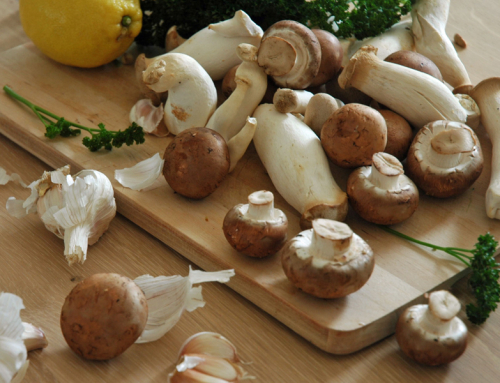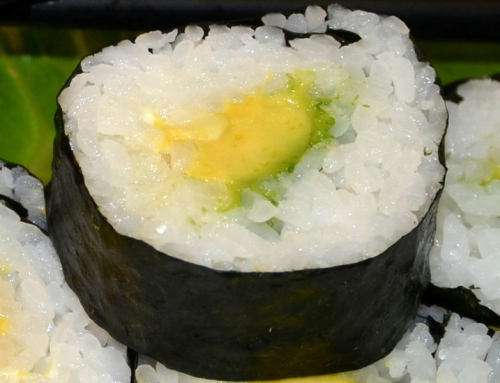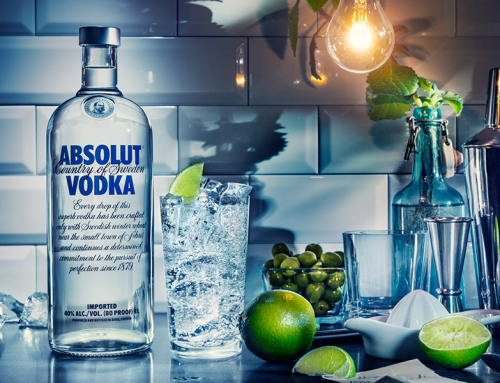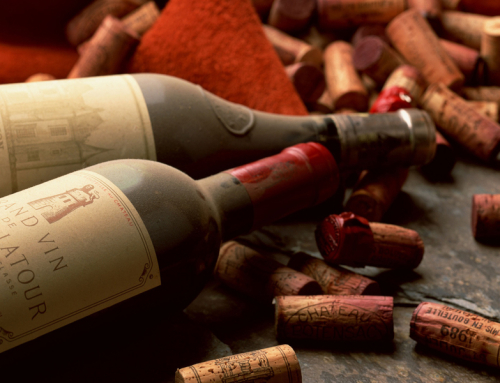Generally speaking, red wines have slightly less residual sugar than white wines, which means that the calories in red wines are usually a little lower than those in white wines. Most nutrition charts don’t bother with the details of residual sugar content and so both red and white wines are shown to be approximately 25 calories per ounce, regardless of variety. This can be misleading if you are really need to know the specifics for a Cabernet Sauvignon or a Chenin Blanc. The USDA National Nutrient Database can be used to find the specific calories of several red wine varietals for those dieters who need more details, and some of those varietals are listed below.
Dessert wines usually have more calories than the red wines.
Barbera
- 1 fluid oz = 25 calories
- 100 grams = 85 calories
- 1 serving 4 oz = 100 calories
- 1 serving 5 oz = 125 calories
Cabernet Franc
- 1 fluid oz = 23 calories
- 100 grams = 83 calories
- 1 serving 4 oz = 92 calories
- 1 serving 5 oz = 124 calories
Cabernet Sauvignon
- 1 fluid oz = 23 calories
- 100 grams = 83 calories
- 1 serving 4 oz = 92 calories
- 1 serving 5 oz = 124 calories
Carignane
- 1 fluid oz = 22 calories
- 100 grams = 74 calories
- 1 serving 4 oz = 88 calories
- 1 serving 5 oz = 109 calories
Chardonay
- 1 fluid oz = 25 calories
- 100 grams = 84 calories
- 1 serving 4 oz = 100 calories
- 1 serving 5 oz = 123 calories
Chenin Blanc
- 1 fluid oz = 24 calories
- 100 grams = 80 calories
- 1 serving 4 oz = 96 calories
- 1 serving 5 oz = 118 calories
Claret
- 1 fluid oz = 23 calories
- 100 grams = 83 calories
- 1 serving 4 oz = 92 calories
- 1 serving 5 oz = 124 calories
Gamay
- 1 fluid oz = 23 calories
- 100 grams = 78 calories
- 1 serving 4 oz = 92 calories
- 1 serving 5 oz = 114 calories
Gewurtzraminer
- 1 fluid oz = 24 calories
- 100 grams = 81 calories
- 1 serving 4 oz = 96 calories
- 1 serving 5 oz = 120 calories
Lemburger
- 1 fluid oz = 24 calories
- 100 grams = 81 calories
- 1 serving 4 oz = 96 calories
- 1 serving 5 oz = 120 calories
Merlot
- 1 fluid oz = 23 calories
- 100 grams = 83 calories
- 1 serving 4 oz = 92 calories
- 1 serving 5 oz = 124 calories
Mouvedre
- 1 fluid oz = 26 calories
- 100 grams = 88 calories
- 1 serving 4 oz = 104 calories
- 1 serving 5 oz = 130 calories
Muller Thurgau
- 1 fluid oz = 22 calories
- 100 grams = 74 calories
- 1 serving 4 oz = 88 calories
- 1 serving 5 oz = 113 calories
Duplin Red Muscadine
- 1 fluid oz = 21 calories
- 100 grams = 75 calories
- 1 serving 4 oz = 84 calories
- 1 serving 5 oz = 105 calories
Pinot Gris
- 1 fluid oz = 23 calories
- 100 grams = 83 calories
- 1 serving 4 oz = 92 calories
- 1 serving 5 oz = 124 calories
Pinor Noir
- 1 fluid oz = 24 calories
- 100 grams = 81 calories
- 1 serving 4 oz = 96 calories
- 1 serving 5 oz = 120 calories
Port
- 1 fluid oz = 45 calories
- 100 grams = 163 calories
- 1 serving 4 oz = 180 calories
- 1 serving 5 oz = 225 calories
Rose’ Wine
- 1 fluid oz = 23 calories
- 100 grams = 83 calories
- 1 serving 4 oz = 92 calories
- 1 serving 5 oz = 124 calories
Sangiovese
- 1 fluid oz = 25 calories
- 100 grams = 86 calories
- 1 serving 4 oz = 100 calories
- 1 serving 5 oz = 126 calories
Sauvignon Blanc
- 1 fluid oz = 24 calories
- 100 grams = 81 calories
- 1 serving 4 oz = 96 calories
- 1 serving 5 oz = 120 calories
Semillion
- 1 fluid oz = 21 calories
- 100 grams = 82 calories
- 1 serving 4 oz = 84 calories
- 1 serving 5 oz = 124 calories
Syran
- 1 fluid oz = 23 calories
- 100 grams = 83 calories
- 1 serving 4 oz = 92 calories
- 1 serving 5 oz = 124 calories
- Red wine has more antioxidants and a higher ORAC value than açaí juice, commercial grape juice, raw blueberries, and pomegranate juice. Every food has a varying ability to absorb free radicals in a controlled environment and this is measured using the Oxygen Radical Absorbance Capacity method.
- Red wines with high antioxidants are the dark red wines which also get additional antioxidants from their contact with oak. Full-bodied red wines aged in oak have the highest antioxidant properties.
- If you can’t see through your wine, it is considered a full-bodied wine and it contains lots of beneficial polyphenols.
- Sugar carbohydrates provide 100 percent of the calories in the wine.
- One serving of red wine has about 3 g of carbohydrates. A fruit-infused muscadine wine might have up to 14 g of carbs in one serving and up to 160 calories depending on the fruit used.
- Red wine contains no fiber to the total carbohydrate value.
- Red wine is a fat-free alcoholic beverage. There is no saturated fat, trans fat or cholesterol in red wine.
- Fermented foods have long been known to be good for the digestion. Probiotics and microbes that are found in fermented foods contain lactic acid which nourishes the good bacteria in the instestinal tract. If a red wine went through a secondary fermentation process, to give the wine a smoother taste, it likely contains more lactic acid.
- Some varieties of muscadine wine may contain a trace amount of protein, with a value under 1 g for a single serving.
- Muscadine red wine grapes have high levels of phenolic compounds, catechins and ellagic acid. These may help reduce the risk of cancer, heart disease, aging and other diseases.
- The alcohol content of red wine is approximately 11% to 13%, depending on the variety, with red wines having a higher alcohol content than white wines or rose.
- Wine drinkers have a 34% lower mortality rate than those who drink spirits or beer.
- Moderate wine drinkers have a 30% lower risk of developing type 2 diabetes than non-drinkers.
- And this one is most surprising, considering research has claimed that alcohol kills non-renewable brain cells – Brain function actually declines less quickly in moderate drinkers than in non-drinkers.
Some of the new and trendy Mediterranean-based diets actually encourage a daily glass of wine, and even try to inspire readers to imbibe. For example, the Sonoma diet actually spends three pages on the virtues of adding wine to your daily diet after your first, rather stringent, 10 days. This is due to the resveratrol that is in red wine that has lately been tied to heart health and slim waistlines.
So what is resveratrol?
The skin of the dark-skinned grapes, such as purple and black, which are often used in the darkest red wines, contain significantly high concentrations of a phytochemical called resveratrol. This is a natural anti-pathogenic polyphenol antioxidant.
Muscadine grapes like Black Beauty have the highest resveratrol of all varieties and the maximum benefit can be gained by drinking muscadine red wine because it provides 40 mg of resveratrol per liter which is 8 times more than the non-muscadine red wines. The fermentation process helps release this compound from the skin and the seeds, which multiplies the bio-availability by several hundred times.
Drinking 1 to 2 glasses of muscadine red wine daily is strongly recommended if you have a high risk for heart disease, breast cancer or diabetes, but please ask your doctor before going off the wagon and into a drunken stupor. If you have impaired liver function or cannot drink alcohol, you can drink red grape juice instead as it contains much more of the compound than fresh red grapes do. Juice your own grapes and seeds, though, to avoid added sugar and extra water from the manufacturers.
Here is why you should give muscadine or other red wines a major spot in your daily diet
- Resveratrol is a powerful bactericide and fungicide with anti-inflammatory properties. Both ingesting and using it topically can lower the risk of pathogenic viral/ fungal infections and inflammation that can be related to coronary heart disease, degenerative nerve disease, Alzheimer’s disease.
- Resveratrol activates the SIRT 1 gene which increases insulin secretion and sensitivity for better blood sugar control.
- Resveratrol cleans the arteries and is said to protect against atherosclerosis.
- Resveratrol appears to have life extension properties and has been used in anti-aging cosmetics.
- Resveratrol reduces the risk of stroke by reducing the susceptibility of blood vessel damage by inhibiting angiotensin, a systemic blood vessel constriction hormone, and increases production of nitric oxide, a beneficial vasodilator.compound. These two things work together to significantly reduce your blood pressure while increasing your blood flow.
- Resveratrol appears to be the key ingredient in red wine that helps prevent damage to blood vessels, reduces the bad LDL cholesterol and prevents blood clots.
- Resveratrol modulates fat metabolism and reduces LDL cholesterol and platelet aggregation.
- Resveratrol has shown to be effective in treating skin and gastrointestinal cancers and has suppressed tumors in lung, breast, melanoma, colon, prostate and pancreatic cancers as well as in leukemia.
- Resveratrol is suspected to be the reason behind what is known as the “French Paradox”. Even though the French consume a high fat diet, they seem to have a lower incidence of heart disease. The belief is that this is due to their regular consumption of red wine.












